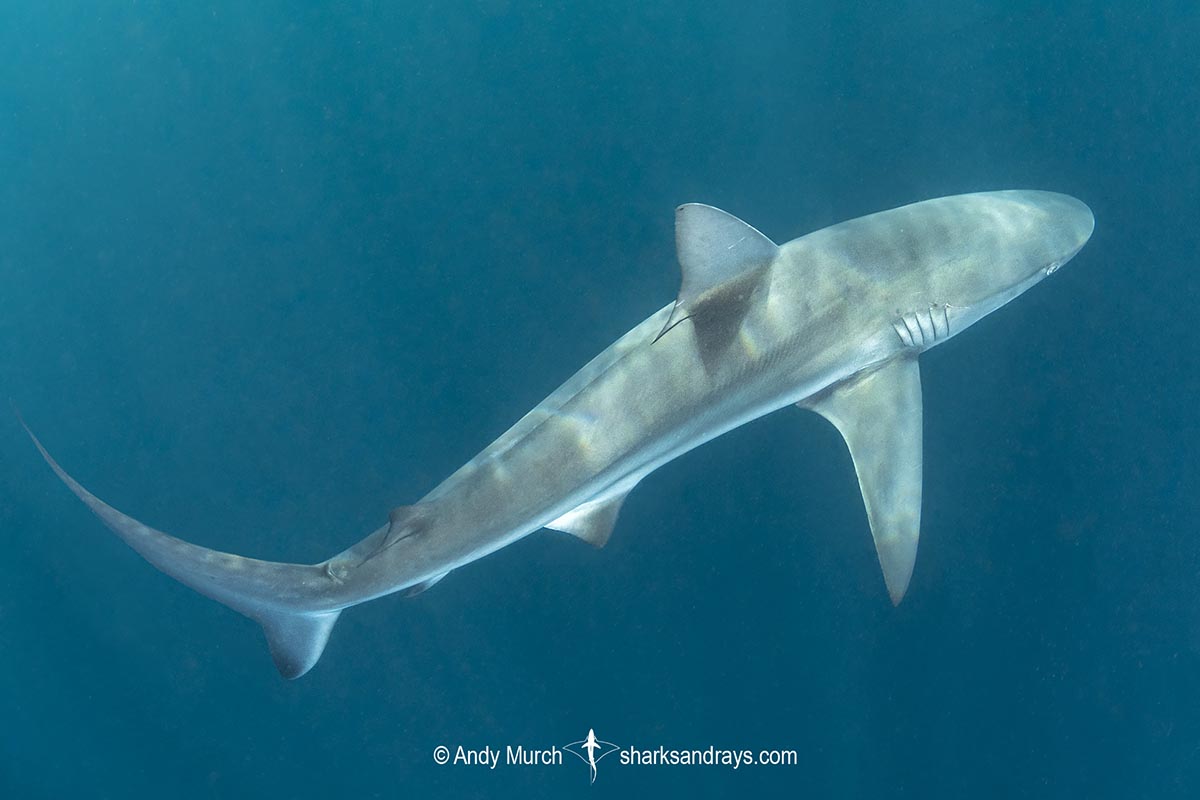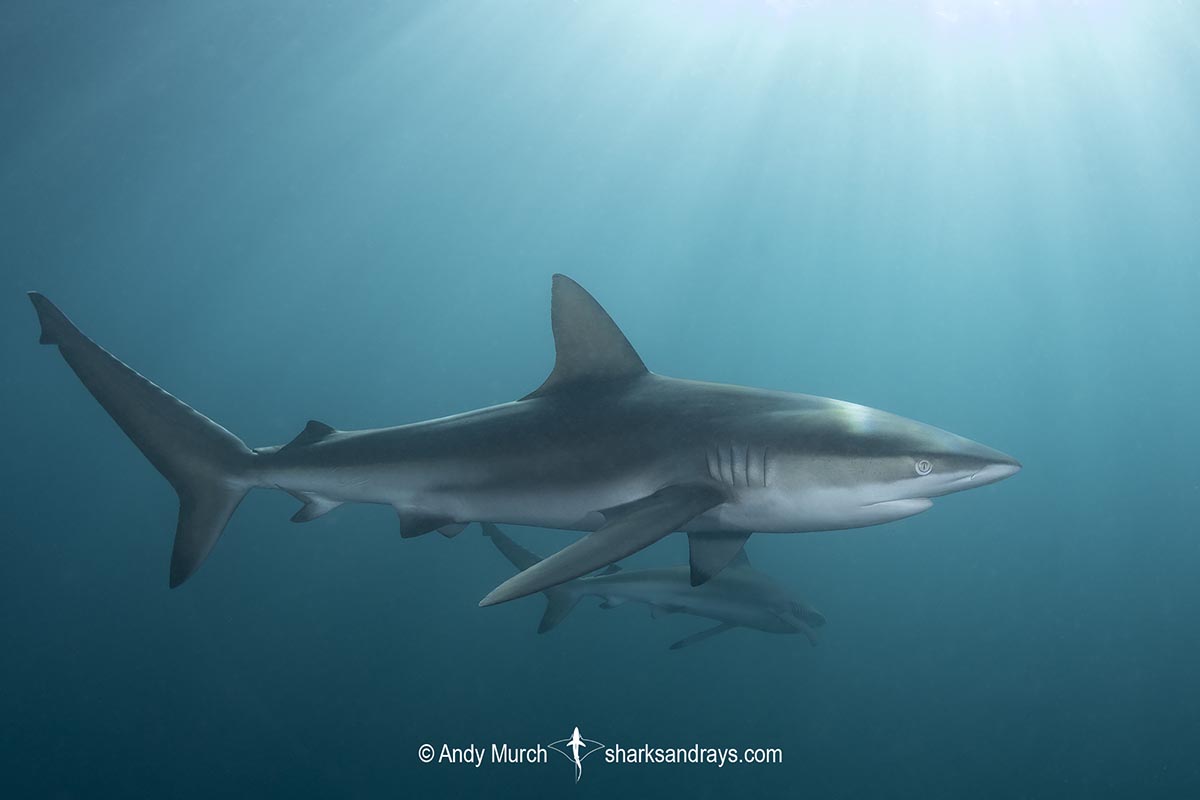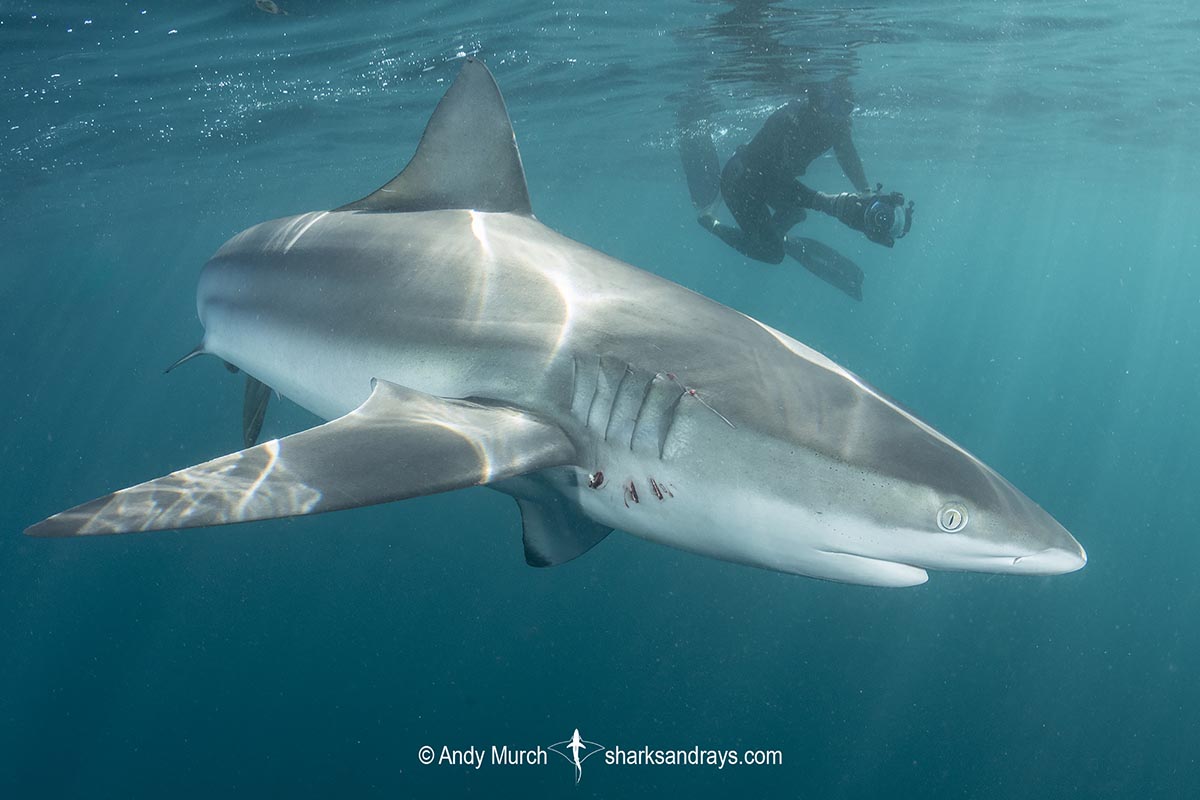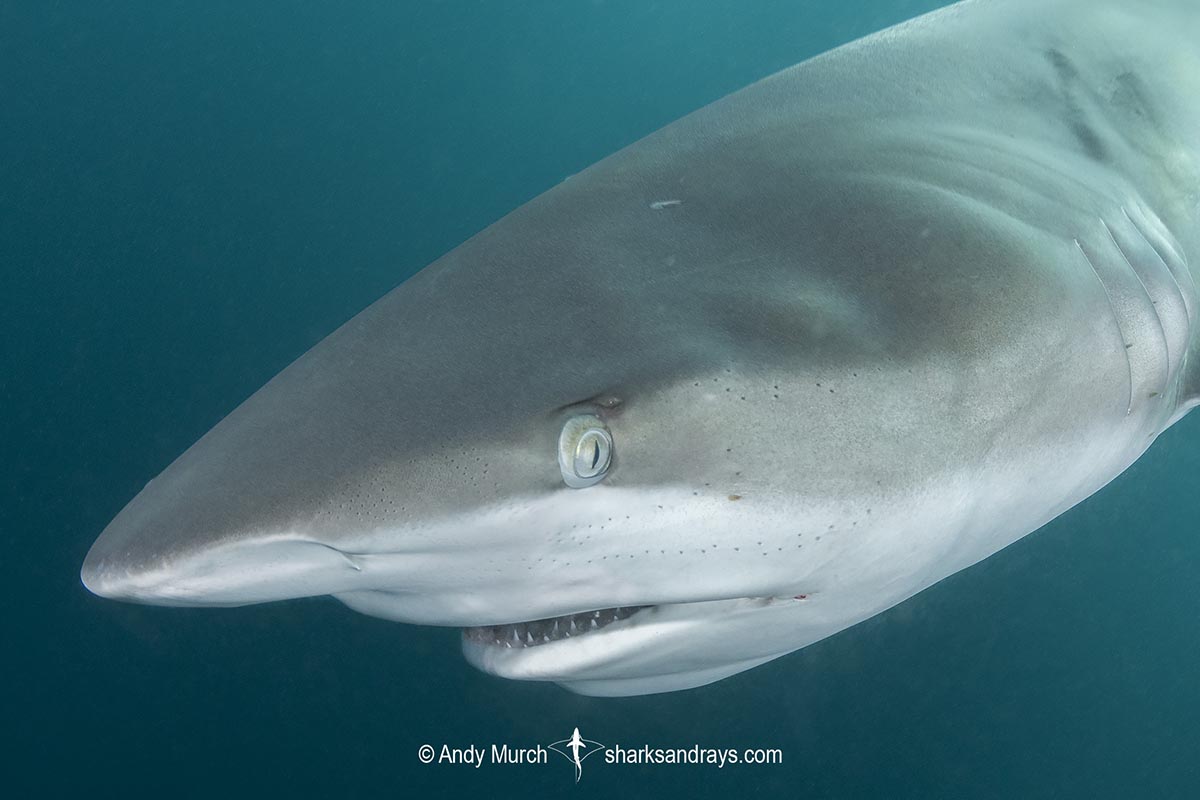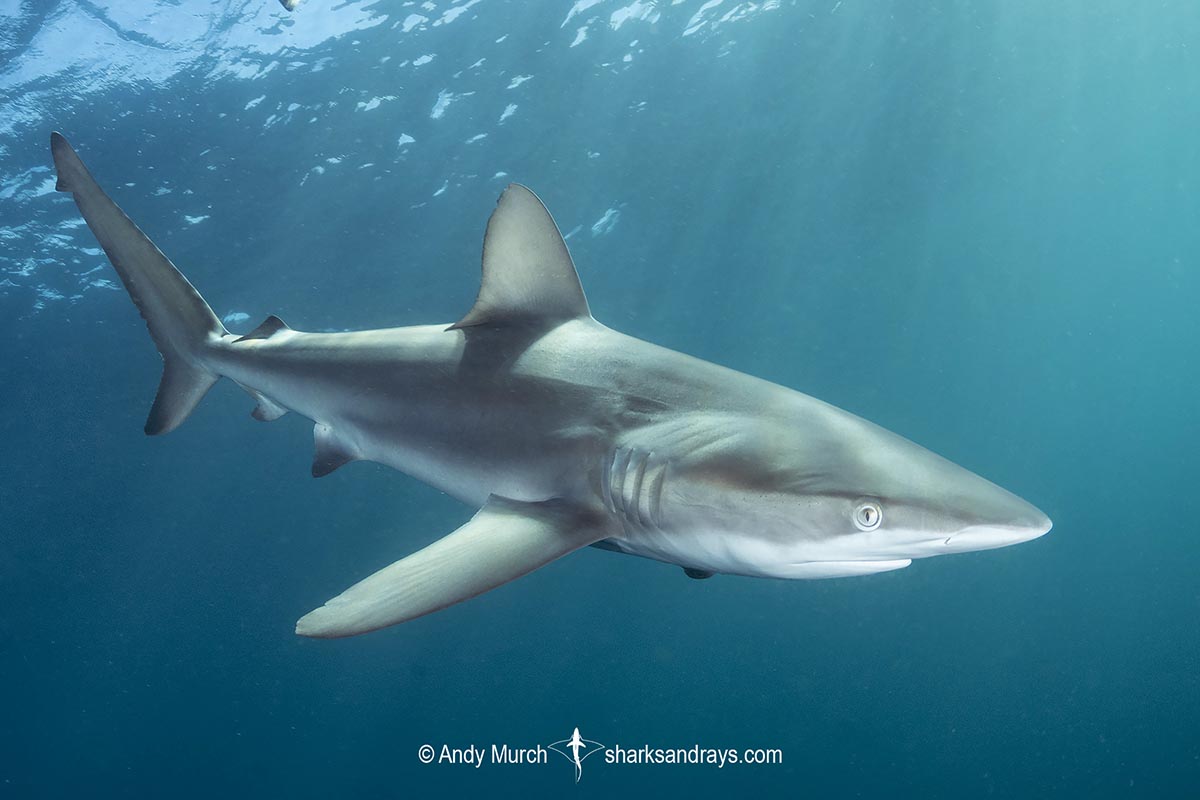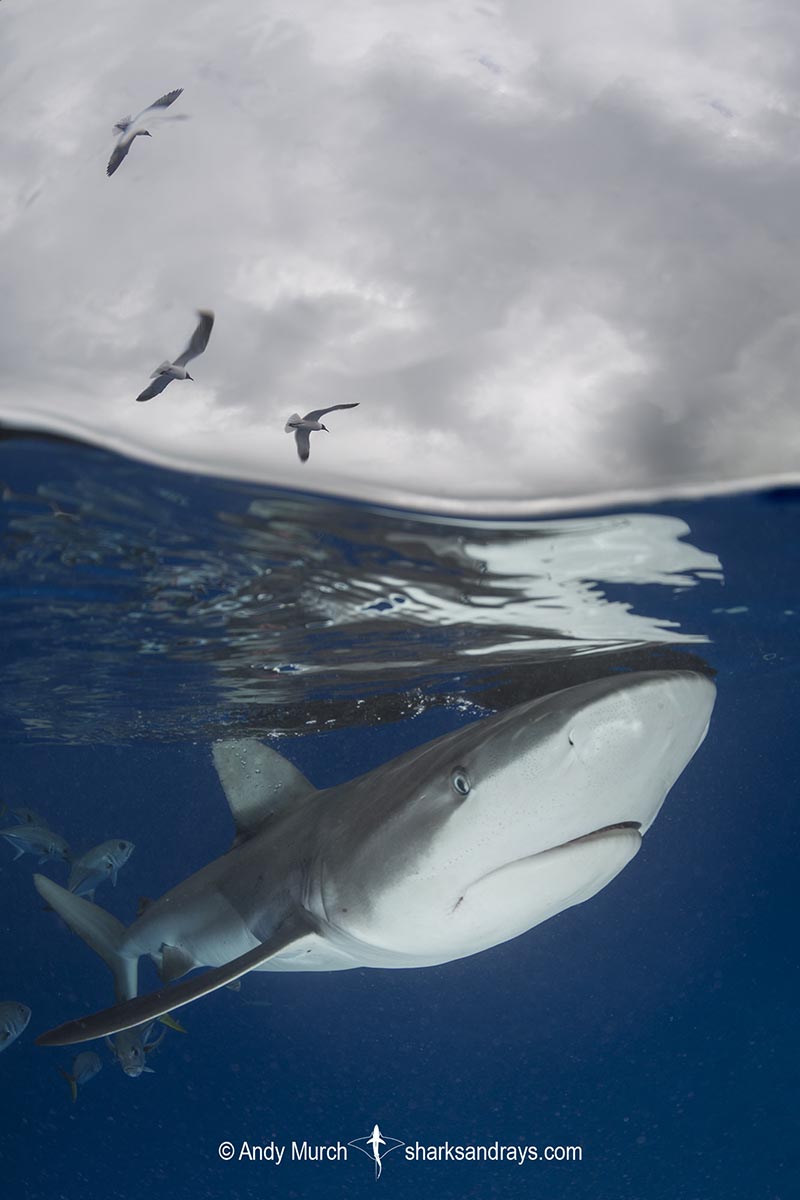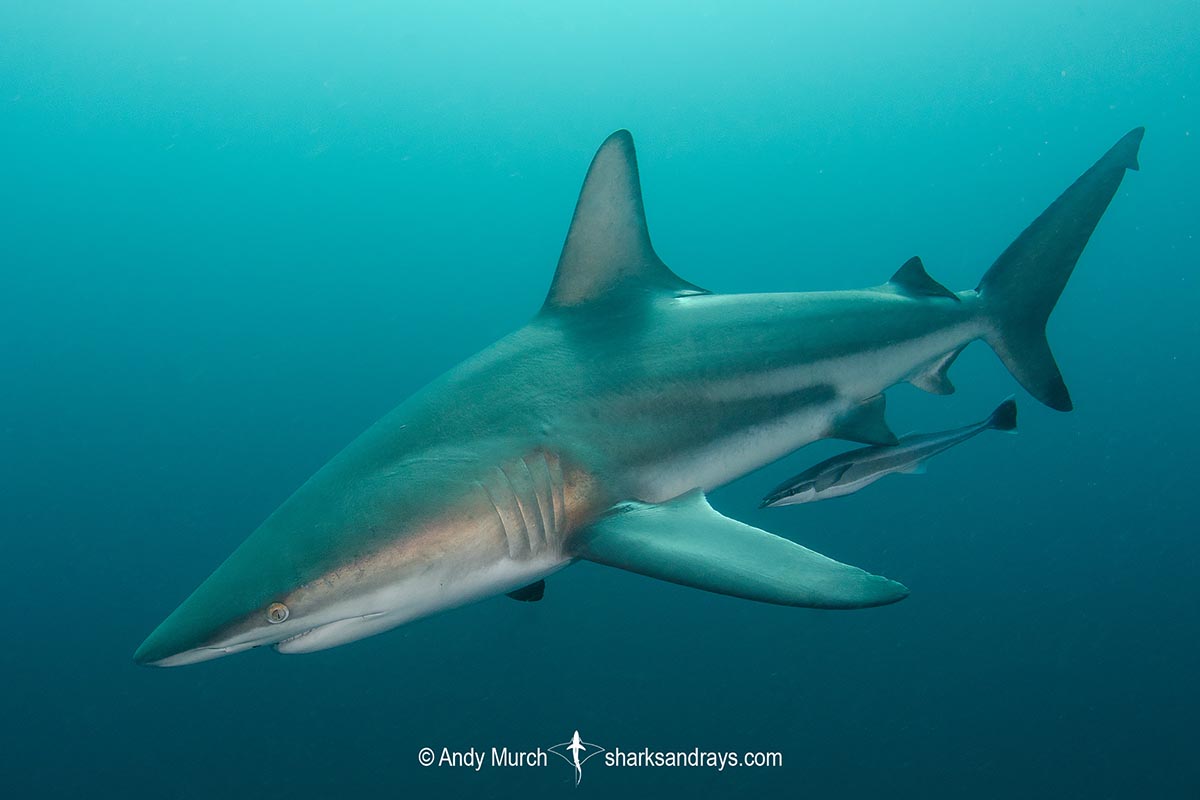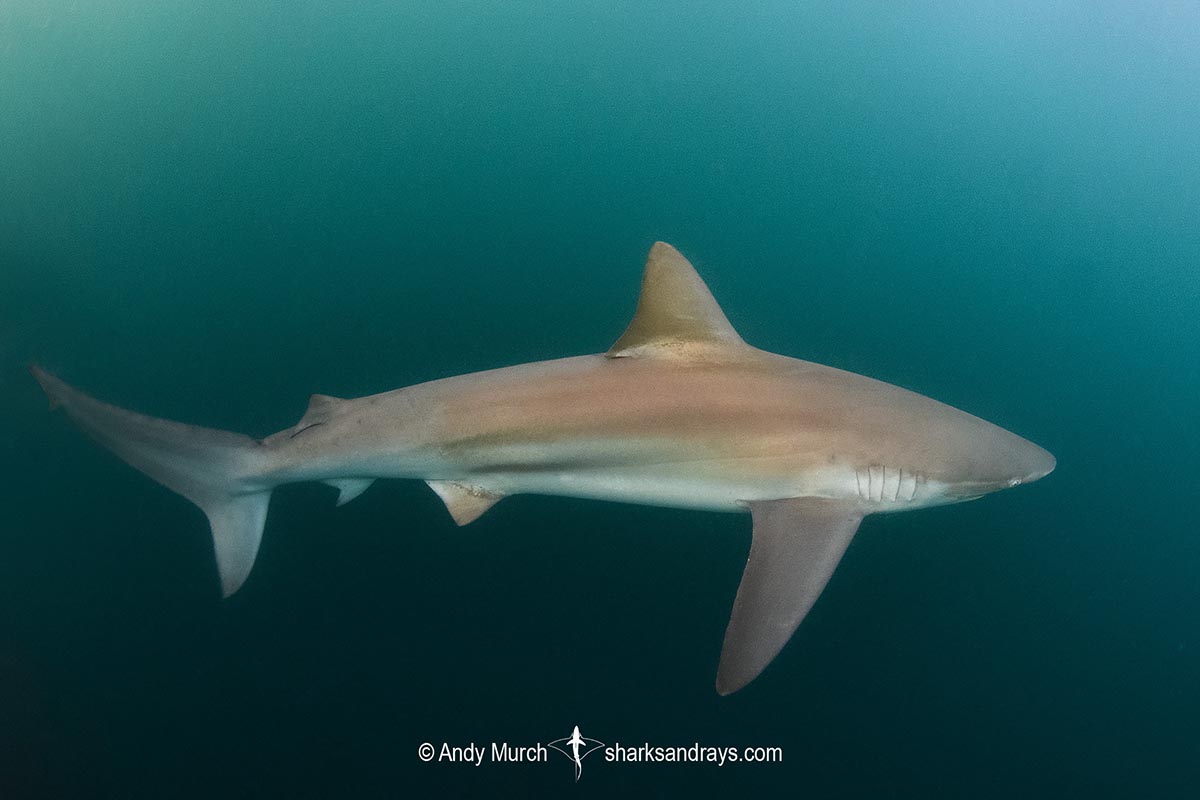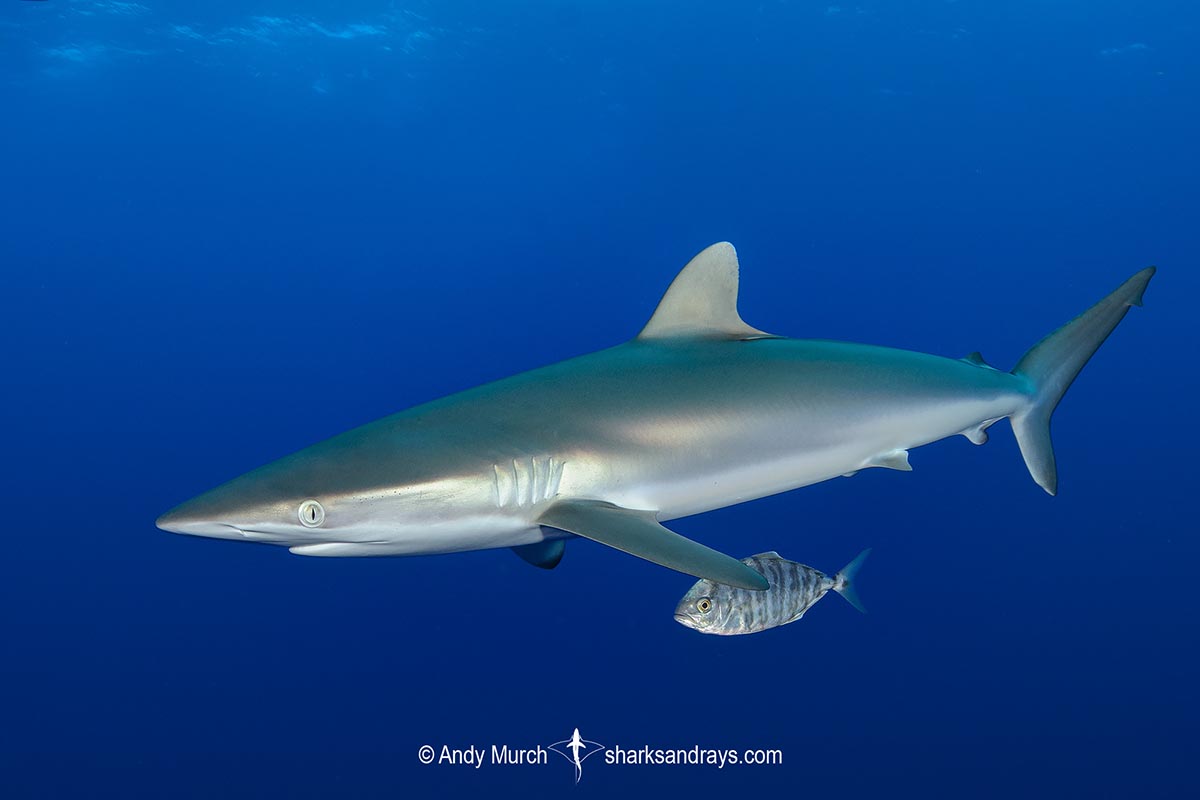Common names
Dusky Shark, Dusky Whaler.
Binomial
Carcharhinus obscurus.
Synonyms
Carcharhinus iranzae, Carcharhinus obscurella, Carcharias macrurus, Carcharinus iranzae, Carcharinus obscurus, Eulamia obscura, Galeolamna eblis, Galeolamna greyi, Galeolamna macrurus, Prionodon obvelatus, Squalus obscurus.
Identification
A potentially very large shark, but not overly robust. Snout relatively short and rounded. First dorsal fin origin level with (or slightly anterior to) free rear tip of pectoral fin. Second dorsal origin level with anal fin origin. Pronounced interdorsal ridge. Dorsal coloration grey to grey-brown with an indistinct flank stripe. Fins usually have dusky tips, ranging from indistinct to quite dark. The caudal fin usually has the darkest margin/tips.
Size
The dusky shark is the largest species within the genus Carcharhinus. The longest measured specimen was 384cm and weighed 372kg. It was off of Sarasota, Florida on the 21st of November 1971. Size at birth 69-100cm.
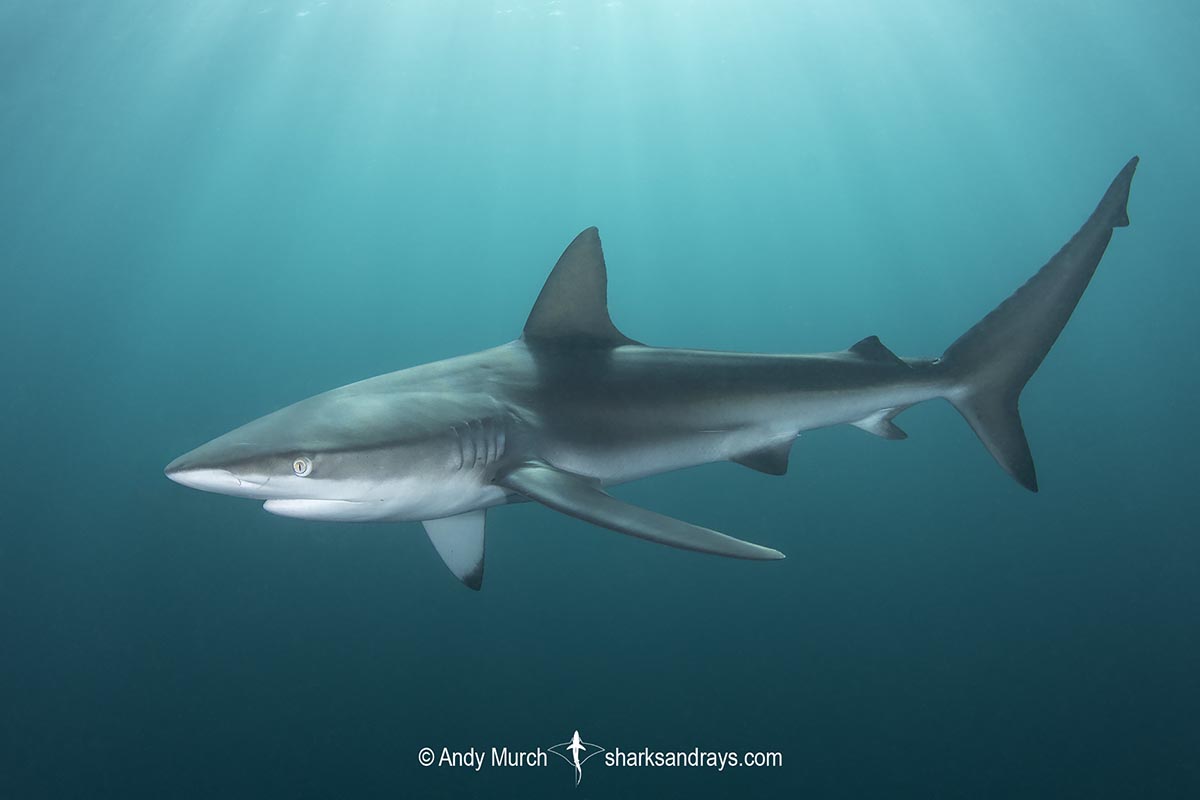
Conservation Status
ENDANGERED
The dusky shark is a slow to reproduce species that is caught globally as a target and bycatch in longline, purse seine, and gillnet fisheries. Where permitted, it is often retained for the meat and fins. Significant declines have been reported in the Northwest Atlantic and Eastern Indian Ocean. In other areas, dusky shark declines are probably similar. Globally, it is estimated that the population has been reduced by 70-80%.
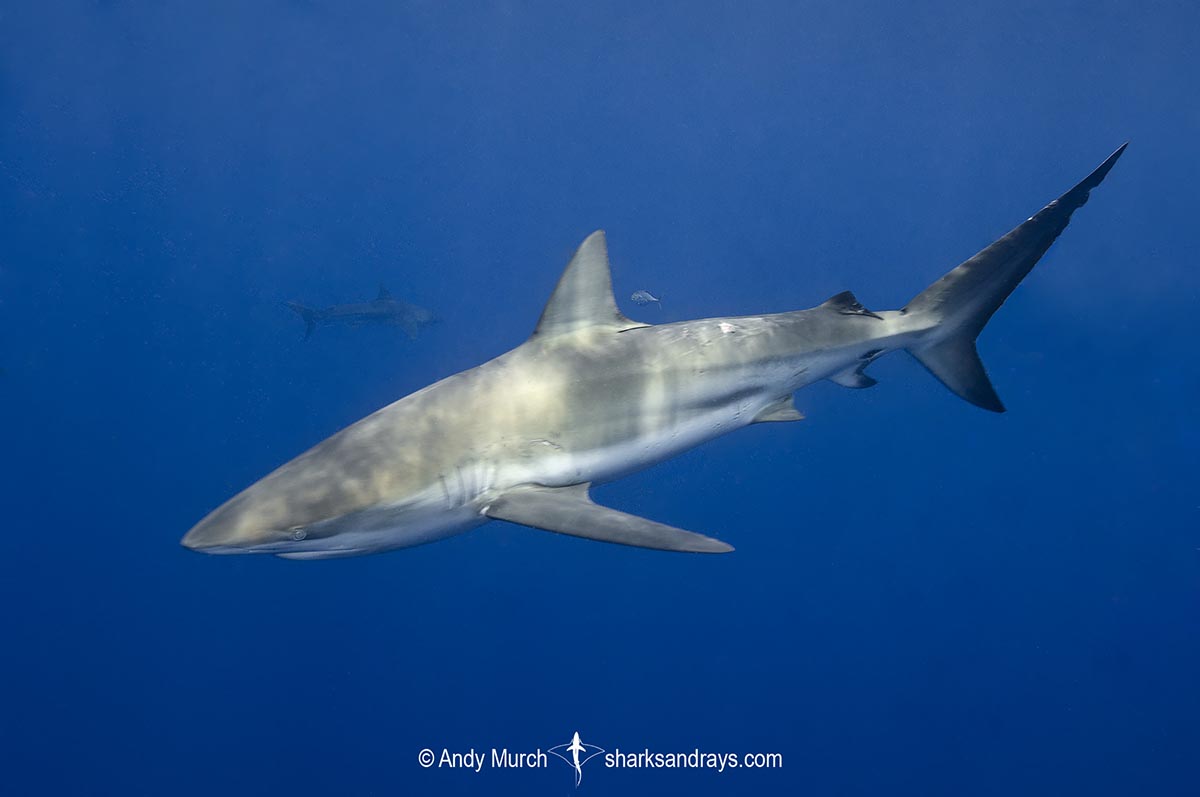
Habitat
Dusky sharks prefer warm temperate seas. They are found in inshore but more commonly on deeper reef, extending to the limit of the continental shelf. Surface to at least 500m. They are not known to enter brackish water.
Distribution
The dusky shark is found along most warm-temperate coastlines but its presence in tropical climates is more patchy. In the western Atlantic, it ranges from Georges Bank to Florida and the Gulf of Mexico, along the coast of Central and South America to southern Brazil. It is common around Australia and seasonally abundant in southern Africa during the Sardine Run.
Reproduction
A viviparous species with yolk-sac placenta. Up to 16 pups per litter. Gestation is approximately 8-12 months in some populations, and up to 16 months in others. The dusky is a late maturing shark; reaching sexual maturity between 17-24yrs with a maximum estimated lifespan of 34yrs.
Diet
Diet consists of a wide assortment of bony fishes including midwater, reef, and demersal species, other sharks and rays, cephalopods and sometimes crustaceans.
Behavior
Dusky sharks are highly migratory, moving north or south as temperatures rise and drop. Gravid females briefly move inshore in the summer to give birth, quickly retreating to deeper water. Juvenile duskies sometimes form large schools in the shallows, only venturing into deeper water when they gain size. This is an important anti-predation strategy, as small duskies are often consumed by larger sharks.
Reaction to divers
Often shy but known to make close passes. Bold and potentially aggressive in baited situations.
Diving logistics
Dusky sharks randomly show up in various regions of the world, but less so in the warmer tropics.
Duskies are fairly common on baited dives near Jupiter Inlet in Florida. Since the banning of inshore shark feeds in Florida waters, the dives take place on deep ledges beyond the state limit. The depth of the dives is around 30m and the shark action is quite varied and intense. Divers may see numerous species including lemons, tigers, great hammerheads, bull sharks, silkies, duskies, and occasionally sandbar sharks. On rare occasions scalloped hammerheads have been known to show up as well.
In South Africa, dusky sharks are often seen on the Sardine Run mixed in with other species that are feeding bait balls of pilchards.
Dusky sharks (locally known as dusky whalers) are quite common in the temperate waters of Australia. From January to June, small aggregations of juveniles can be seen in shallow water close to Manly Beach; a popular local dive site.
Around 2005, while shooting Summer of the Sharks we chummed at a deep seamount in the Gulf of Mexico about 70 nautical miles south of Venice, Louisiana. Within a few minutes, 50+ large dusky sharks appeared in the slick. We snorkeled with them for more than an hour and found them to be quite aggressive. No other sharks showed up so the duskies were probably the dominant species in that area.
Similar species
Blacktip Shark Distinguished by its more pointed snout, generally darker fin tips, and pronounced white flank stripe.
Bronze Whaler Shark Distinguished by very short free rear tip on first dorsal fin, lack of interdorsal ridge, and usually bronzier dorsal colouration.
Silky Shark Distinguished by more rounded apex of first dorsal fin, and first dorsal origin slightly posterior to free rear tip of pectoral fin.

